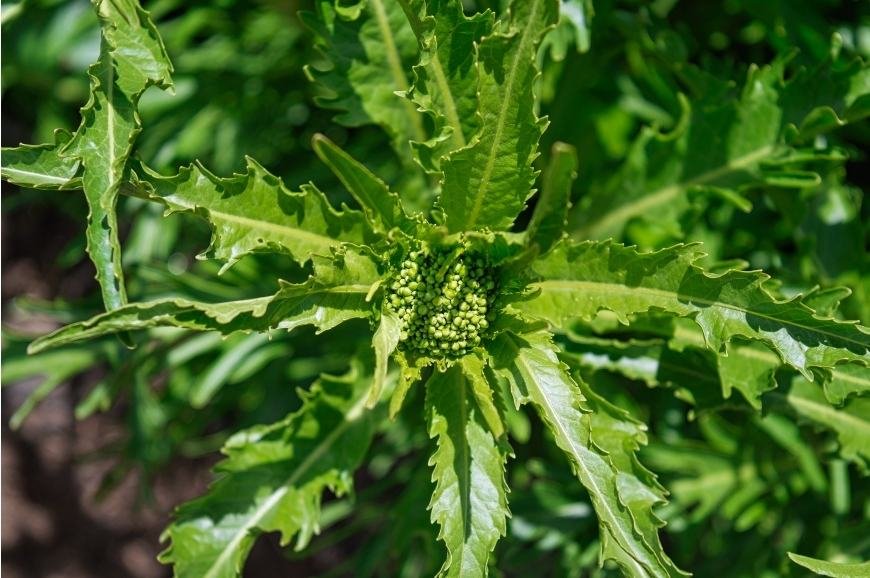What is Wild Lettuce?
Learn the answer to "What is Wild Lettuce?" in our comprehensive guide, exploring its uses, benefits, and risks for both recreational and medicinal purposes.

Do you have an understanding of what wild lettuce is and how it's used? In this blog post, we'll explore the past and present of wild lettuce to understand its characteristics and applications.
We will discuss how to identify wild lettuce plants from their common relatives like cultivated lettuce or poisonous varieties. Additionally, you'll learn the proper techniques for harvesting raw wild lettuce and preserving it for future use. Our exploration doesn't stop there - we'll also delve into using wild lettuce as a recreational drug and its potential medicinal benefits as a natural treatment.
Finally, we'll address some risks associated with taking wild lettuce products so that you can make informed decisions when experimenting with this intriguing bitter herb. So buckle up and join us on our journey through the fascinating world of wild lettuce!
Table Of Contents:
- What is Wild Lettuce?
- A Brief History of Wild Lettuce Use
- Identifying Wild Lettuce: A Guide
- Wild Lettuce: A Natural Alternative to Recreational Drugs?
- Risks of Wild Lettuce: What You Need to Know
- FAQs in Relation to
- Conclusion
What is Wild Lettuce?
Wild lettuce, also known as opium lettuce or bitter lettuce, is a biennial plant with sedative and pain-relieving properties.
It contains lactucarium, a compound with mild psychoactive effects similar to opium but without addictive qualities.
Wild lettuce has long been employed in conventional healing treatments to address sleeplessness, tension, coughs, and muscular aches.
Today, it's gaining popularity among herbalists and recreational users seeking natural alternatives for relaxation and stress relief.
A Brief History of Wild Lettuce Use

- Ancient Egyptians: Wild lettuce cultivation was depicted in ancient Egyptian tomb paintings.
- Roman Empire: Roman physicians prescribed wild lettuce extracts as sleep aids and pain relievers.
- Middle Ages: Wild lettuce was used to treat various ailments such as colic, fever, and restlessness in medieval Europe.
- 19th Century: Wild lettuce gained popularity in the United States as a natural alternative to opium-based medications and was listed in the United States Pharmacopeia from 1882 until 1916.
Wild lettuce may offer certain advantages, yet it is important to consider any potential hazards associated with taking this plant, including possible interactions with other medications or substances, allergies, and long-term health consequences.
Identifying Wild Lettuce: A Guide
Knowing how to identify wild lettuce is crucial for safe harvesting and use.
Physical Features
Wild lettuce has a thick stem with milky sap, large oblong-shaped leaves with wavy edges, and small yellowish-green flowers.
Habitat
Wild lettuce can be found in various environments such as roadsides, vacant lots, riverbanks, and even your backyard.
Lookalikes
- Prickly Lettuce: This close relative has prickly stems and more elongated leaves.
- Sow Thistle: Sow thistles have similar leaf shapes but lack the milky sap found in wild lettuce.
- Dandelion: Dandelions may look like young wild lettuce plants, but have smooth-edged leaves without any waviness or lobes.
Tips for Identification
- Look for the milky sap.
- Examine the leaves for waviness and lobes.
- Observe flowering time.
Accurately identifying wild lettuce requires careful observation of its physical features and habitat. Familiarize yourself with these characteristics and always double-check before harvesting any plant to ensure your safety and enjoyment of this fascinating natural resource.
Wild Lettuce: A Natural Alternative to Recreational Drugs?

Are you in search of a novel approach to de-stress and ease your mind? Wild lettuce might be worth a try.
Often referred to as "opium lettuce," wild lettuce has been used for centuries to alleviate pain and anxiety.
Wild lettuce, while not containing any opiates or opioids, can still provide a sense of tranquility and elation if taken in the right amount.
But be careful - wild lettuce can interact with other medications and may cause allergic reactions in some people.
When trying wild lettuce for the first time, start with a lower dose and always prioritize safety and responsible consumption.
Whether you're looking for a new herbal experience or simply curious about natural remedies, wild lettuce is definitely worth exploring.
Just be sure to do your research and consult with a healthcare provider before trying it out.
Wild Lettuce: A Natural Remedy for Pain Relief, Sleep, Coughs, and Digestive Health
For generations, the milky sap of wild lettuce has been utilized as a natural cure for various ailments due to its compounds that have sedative and analgesic effects.
- Pain relief: Wild lettuce is a popular alternative to over-the-counter pain medications, helping with headaches, muscle pains, joint discomforts, and menstrual cramps.
- Sleep aid: Its mild sedative properties make it a natural sleep aid, reducing anxiety and promoting relaxation before bedtime.
- Cough suppressant: Wild lettuce soothes coughs by reducing inflammation in the respiratory tract and suppressing spasms associated with persistent coughing.
- Digestive health: It's recommended for gastrointestinal issues such as indigestion or bloating due to its antispasmodic effects on smooth muscles within the digestive system.
While scientific research supporting these claims is limited, wild lettuce can be consumed as a tincture, tea, or capsules, starting with a low dose and gradually increasing if needed.
Risks of Wild Lettuce: What You Need to Know
Wild lettuce has become a popular choice for recreational and therapeutic applications, yet it is critical to be conscious of the possible risks.
Drug Interactions
Combining wild lettuce with other sedatives like alcohol or prescription sleep aids can lead to excessive drowsiness and respiratory depression.
Allergic Reactions
Some individuals may experience mild to severe allergic reactions when exposed to wild lettuce.
Long-Term Health Effects
Prolonged use of wild lettuce could potentially cause liver damage over time due to certain toxic compounds found in the plant.
- Moderate your intake
- Listen to your body
- Choose quality products from reputable suppliers
By staying informed about these risks and taking appropriate precautions, you can enjoy the unique properties of wild lettuce responsibly.
FAQs in Relation to
What are the effects of wild lettuce?
Wild lettuce produces mild sedative and analgesic effects, making it useful for treating insomnia, anxiety, muscle pains, and coughs.
What are the different types of wild lettuce?
There are two main types of wild lettuce: Lactuca virosa (opium or bitter lettuce) and Lactuca serriola (prickly or compass plant).
Can wild lettuce be eaten raw?
While young leaves can be eaten raw in salads or cooked like spinach, consuming large amounts might cause digestive issues due to their bitterness. It's best to consume mature plants in moderation to avoid adverse side effects.
Are there any risks associated with wild lettuce?
Consuming excessive amounts of wild lettuce can lead to adverse side effects such as dizziness, nausea, and vomiting. It's important to use caution and consult with a healthcare professional before using wild lettuce for medicinal purposes.
Conclusion
Wild lettuce is a versatile plant that can be used for both recreational and medicinal purposes, with its tall stem and lettuce-like leaves making it easy to identify.
Harvesting involves cutting the stem at the base and drying it out before storing it in an airtight container.
While it can induce feelings of relaxation and mild euphoria when used recreationally, it's important to note that there are risks associated with taking too much or combining it with other substances.
On the other hand, wild lettuce has been known to alleviate pain and anxiety when used as medicine.






































































































































